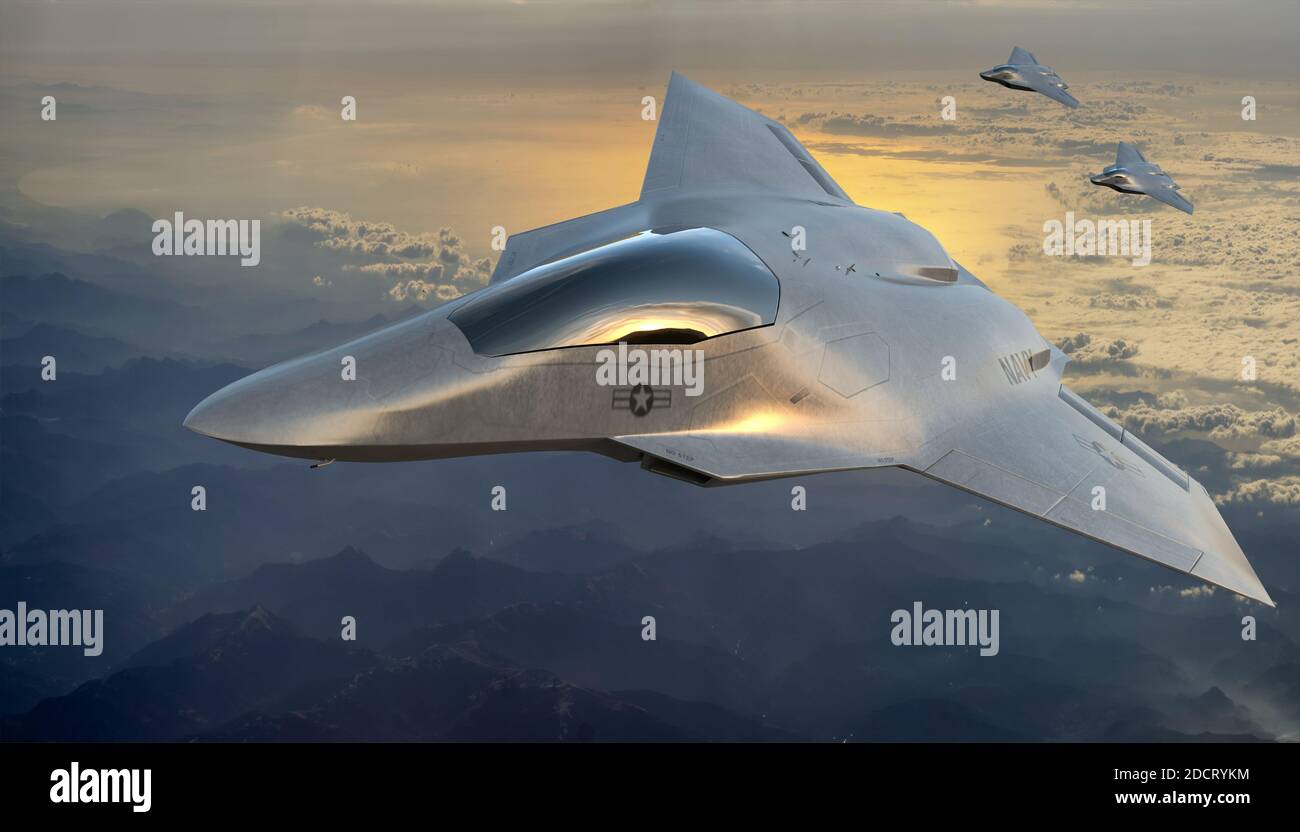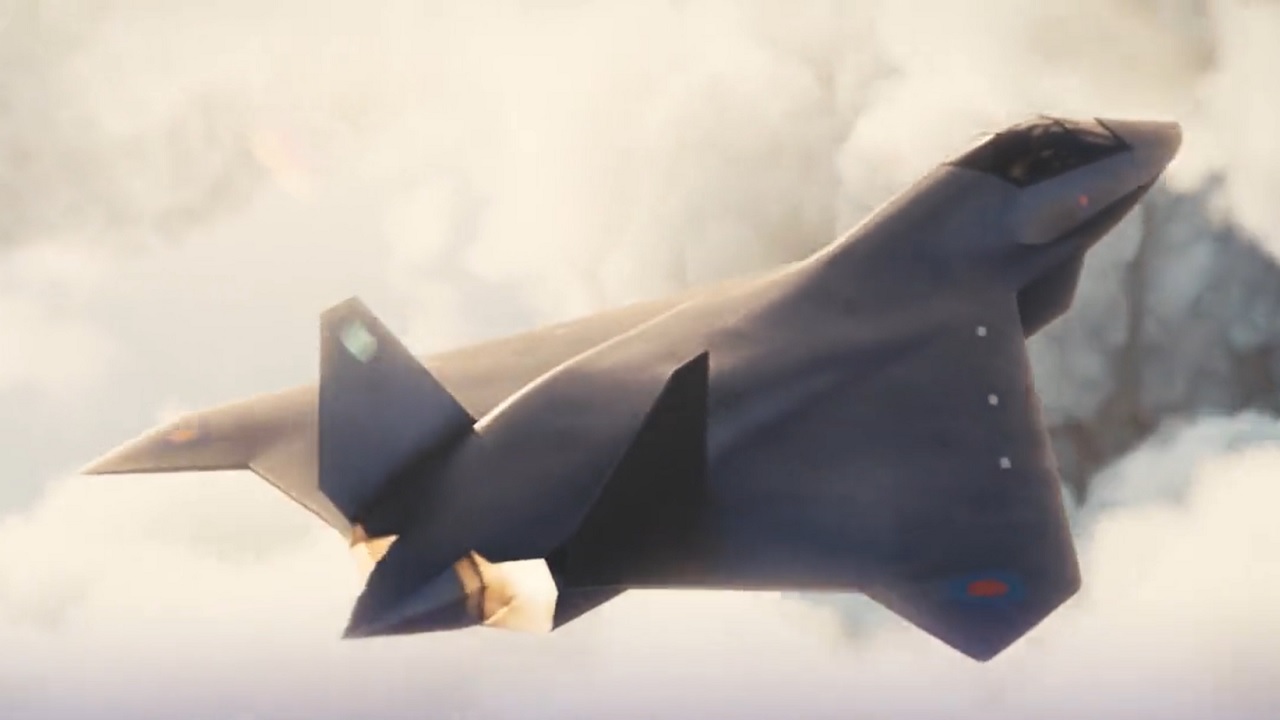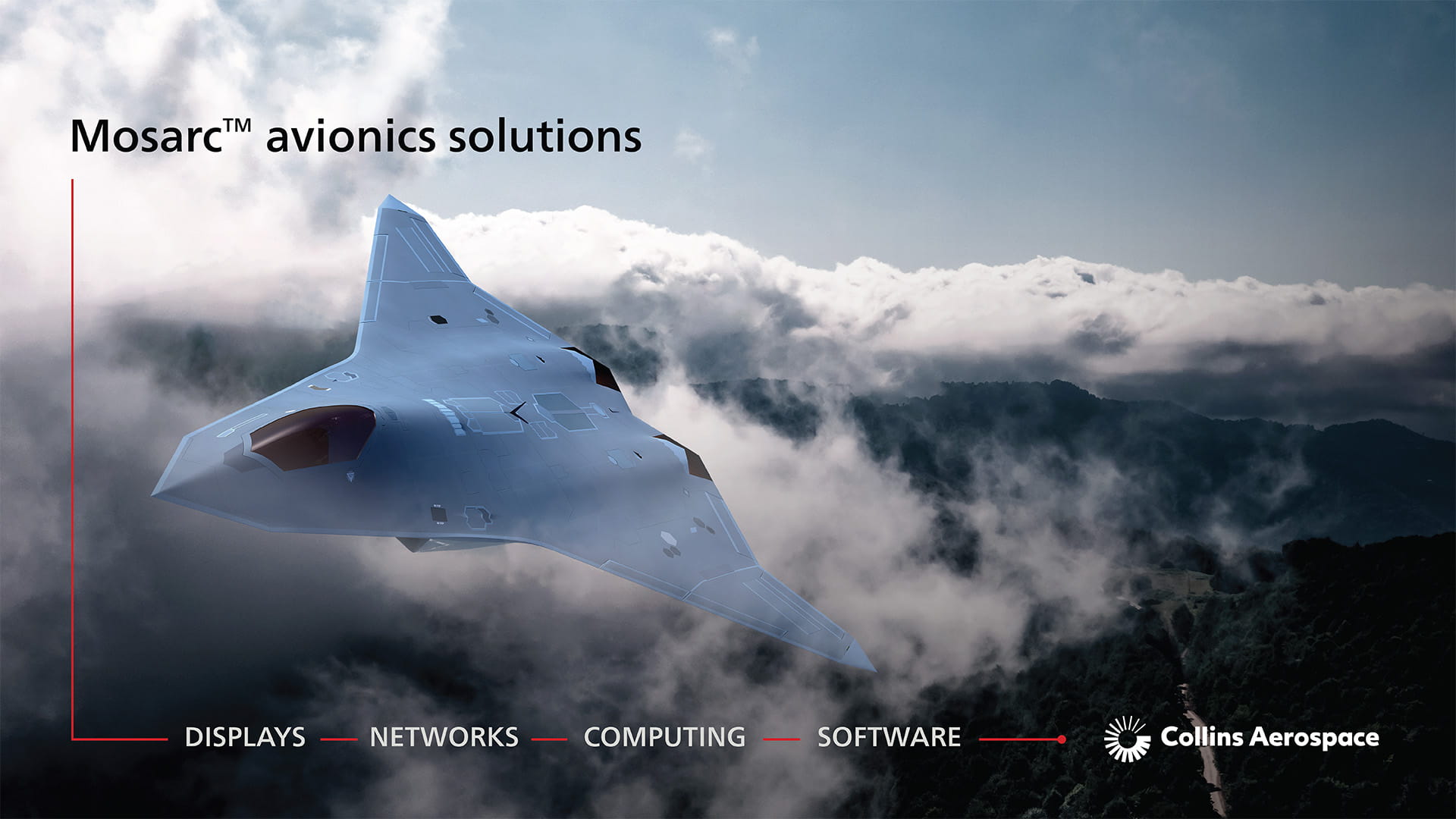Sixth Generation Aircraft - While some countries are still developing the most advanced 5th generation fighter to date, manufacturers around the world are already beginning to define the future of dogfighting. To decipher what a 6th generation warrior might look like, let's take a look at the most promising ones.
In the early 2000s, Lockheed Martin launched a wave of so-called 5th generation fighters with the F-22 Raptor. Warriors of this generation have several common features:
Sixth Generation Aircraft
Along with these features, it's worth noting that the whole fighter generation concept has been criticized by some of its competitors as oversimplification or even as a marketing argument in favor of Lockheed Martin. For example, the concept of privacy through passive stealth elements remains a controversial area, as it is seen by some as too restrictive for airframe design and overall performance, but is easily refuted as sensor technology advances.
Tempest: Uk Unveils Its Sixth Generation Unmanned Fighter Jet
Over the past five years, aircraft manufacturers around the world have already received several sixth-generation jet fighter concepts. While many are still in development, a quick look at the features and tactical applications of the most promising ones provides an interesting look back at where the industry is headed.
From the Air Superiority 2030 report published in 2016, the need for a new fighter jet that can replace both the F-15 Eagle and the F-22 Raptor follows. Thus was born the Next Generation Air Domination (NGAD) program, which aims to develop Penetrating Anti-Aircraft (PCA) fighter aircraft with "a family of capabilities operating in the air, space and cyberspace".
This new aircraft would need to have a long range to reach remote battlefields without fixed bases, such as the Pacific Ocean. With the increasing number of access blocking/area denial (A2/AD) systems, supersonic speed and privacy will become imperative.
Air Force Secretary Will Roper said the program could draw inspiration from the Century series of fighters to achieve its strategic goals in less time, resulting in the development of at least six fighter jets (and two cancellation projects). Less than six years into the 1950s: the F-100 Super Saber, F-101 Voodoo, F-102 Delta Dagger, F-104 Starfighter, F-105 Thunderchief, and F-106 Delta Dart, all from different manufacturers.
Air Force's Sixth Gen Fighter Downselect 'not All That Far Away,' Says Kendall
With the development of the Digital Century Series, fewer aircraft will be produced every five to six years using the latest technology available. Each airframe can be designed with unique capabilities in mind: one will use directed energy weapons, the other will focus on electronic warfare. This will allow them to work as a network that can withstand any threat.
Boeing, Lockheed Martin and Northrop Grumman have announced their pilot studies in anticipation of an official tender from the US Air Force.
Russia, which relied on Sukhoi to build its latest Su-57 platform, could return to the second Mikoyan-Gurevich (MiG) design bureau to build a sixth-generation fighter. At least that's what the manufacturer has been suggesting since 2017.

However, Mikoyan has not created a single new fighter since the MiG-31, which entered service in 1981. Faced with criticism, CEO Ilya Tarasenko is optimistic. “This is not a legendary project, this is a project started by MiG a long time ago. We are conducting this study intensively under the control of the United Aviation Consortium (UAC) and will soon present the results to the public.”
Italian Air Force Boss Envisions Merger Of Europe's Next Generation Combat Aircraft Programs
The MiG-41 is expected to be an interceptor like its Cold War predecessor. But to adapt to the threats of this new century, it will have to perform exceptionally. For example, a plane should be able to reach space... almost. Indeed, according to its manufacturer, it will be able to develop between stratopause and tropopause at an altitude of 9,000 to 17,000 meters above sea level - slightly lower than the MiG-25 and SR-71. to be able to. Its top speed of 3,675 kilometers per hour (2,300 mph) will allow it to shoot down hypersonic missiles.
The MiG-41 was expected to enter service in 2030. However, the latest UAC strategic roadmap indicates that priority will be given to a new light/medium fifth aircraft, the Sukhoi Checkmate, in the 2030-2035 period. fighter jet generation.
During ILA Berlin 2018 in April 2018, Dassault Aviation and Airbus, together with their respective governments, announced a collaboration agreement to develop the Future Combat Air System (FCAS) that will replace Dassault Rafale and the Eurofighter Typhoon. In February 2019, Spain joined Germany and France with the industrial participation of Indra Sistemas.
Like its American counterpart, FCAS aims to develop what they describe as not just a new aircraft (next-generation fighter, NGF), but a "system of systems" in which the fighter will interact with other elements, such as a swarm of fighters. . Support drones called Remote Carriers to create what was unveiled as Air Combat Cloud (ACC) at the Paris Air Show 2019. Airbus and MBDA are working on concepts for such drones.
Dagger Sixth Generation Fighter Jet By Designka On Deviantart
Three months after the official launch of the FCAS project, the UK unveiled a sixth-generation fighter aircraft design called the Tempest at the Farnborough Air Show in July 2018. Royal Air Force until 2030. Italy joined Team Tempest in September 2019. The program currently brings together BAE Systems, Leonardo UK, MBDA UK Leonardo Italy, Rolls Royce, MBDA Italy, Avia Aero and Elettronica Group.
Like the two aircraft above, Tempest needs to be powered by multiple drones and share its data with other assets on the battlefield, giving it what's known as Collaborative Interoperability (CEC).
Sweden signed a Memorandum of Understanding for Saab to explore "a joint program for the development and acquisition of warplanes, including the development of new concepts to meet the future needs of both countries".

Japan is also actively considering joining the program as a partner to support its own FX program led by Mitsubishi Heavy Industries.
China Trails As Us Sixth Generation Jet Project Gets Airborne
China is one of the few countries in the world armed with 5th generation warplanes. The Chengdu J-20 stealth fighter officially entered service in February 2018. But since then, doubts have arisen about its performance, especially when compared to its American counterparts, the F-22 and F-35.
A year after the J-20 entered service, the Global Times reported that China had begun developing a prototype of a next-generation fighter jet. An official from the Chengdu Aerospace Research and Design Institute said it plans to develop it by 2035, if not sooner.
The program was approved by US Air Combat Commander General Mark Kelly, who said development was "going according to plan".
Little is known about the mysterious Chinese project. According to rumors, the aircraft will be able to fly drones and rely on artificial intelligence, just like its Western counterparts.
Sixth Generation Fighter Concept 3d Models In Fighter 3dexport
Considering these few examples, a rough outline can be drawn to indicate the improvements or differences between the fifth and sixth generation warriors:
From press kits to conferences, the term "systems of systems" has become the mantra when it comes to 6th generation fighter jets. Proposed concepts betting on the evolution of artificial intelligence seek to keep fighter pilots and expensive machines out of the action, choosing to rely on cheaper "unmanned wingmen".
According to Enrico Charlock, senior manager of aerospace and defense solutions at Dassault Systèmes, the "system of systems" concept and the way to develop the next generation of warplanes go beyond pure innovation and also enable interoperability among allied air forces.

"A connected systems strategy applies not just to the national defense forces, but to the entire NATO alliance," Sharlock said. “To standardize systems engineering, the NATO Architecture Framework is being developed to become a standard for developing and defining enterprise architectures for military use. The purpose of NATO Architecture Framework Version 4 (NAFv4) is to provide a standard for developing and defining enterprise architectures for both military and commercial use. The NATO Architecture Framework provides guidance for defining both enterprise and system architectures.”
World's Most Advanced Fighter Jet To Enter Production, First Sixth Gen Stealth Aircraft
“The framework's goals range from providing a way to organize and present architectures to stakeholders, providing a collaborative approach to understanding, comparing, and integrating architectures, to serving as an important tool for acquiring and deploying cost-effective and interoperable capabilities, to ensuring compliance. Architectural references prepared by international standards organizations such as the International Organization for Standardization, Institute of Electrical and Electronics Engineers, The Open Group, Object Management Group.”
With an entry date estimated at 2035 at best and a trend towards delayed war programs, new technological breakthroughs in the next decade could change the game and give the 6th generation fighter a completely different face.
By checking this box, you confirm that you have read and accepted our Privacy Policy.
Aircraft appraisal online, free aircraft appraisal, aircraft appraisal services, aircraft appraisal cost, aircraft appraisal jobs, aircraft appraisal course, aircraft appraisal training, business appraisal, rolex appraisal, appraisal software, 409a appraisal, aircraft appraisal report
Post A Comment:
0 comments so far,add yours